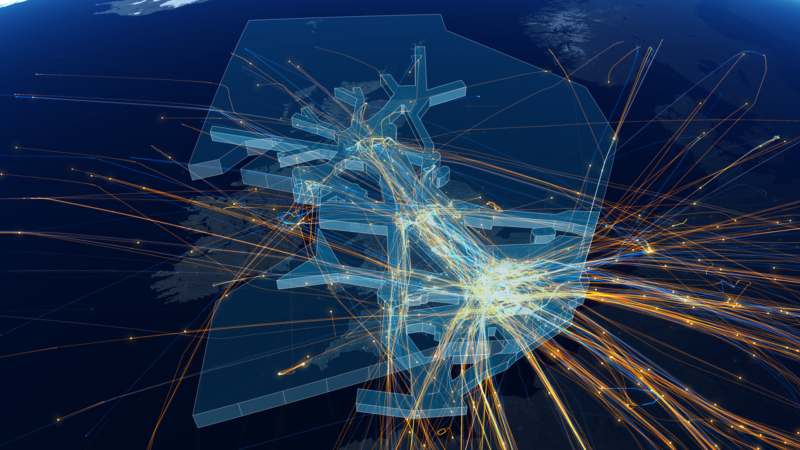‘File it, fly it’: the flight paths of the future
13 February 2020We’ve often talked about the need to modernise UK airspace. It hasn’t seen any significant redesign since it was first mapped out in the 1950s. But, since then, the type and number of aircraft flying through our airspace have changed dramatically.
We have been exploring what our future airspace could look like; what it could mean for our controllers and for the aircraft that fly through UK skies.
Our work has been focused on the airspace above 7,000 feet (which we refer to as ‘network level’). But we’ve also been working with airports to understand where departing aircraft will join this network and where they’ll leave it on arrival, and to make sure that any future airspace design is flexible enough to allow noise respite options to be developed for local communities.
You may have never thought about it, but aircraft plan to follow a network of defined routes to get to their destinations and controllers are required to identify and resolve where aircraft on these routes may conflict. This means that we often have to take them off these defined routes.

In the future, UK airspace will operate a ‘file it, fly it’ approach. But what does ‘file it, fly it’ mean, and how is it different from the way controllers manage traffic today?
‘File it, fly it’ will mean that most aircraft will still file a flight plan to use one of a number of established routes, but these routes will be designed to keep aircraft separated. This means that most aircraft will stay on that assigned route from take-off until they reach high-level airspace. Sounds simple, doesn’t it!
You may well wonder why we’re not doing that already. The answer is that our mid-20th century airspace route structure hasn’t allowed it. The technology to support this way of flying relies on the satellite navigation equipment that modern aircraft are fitted with. This allows them to follow very precise paths and therefore the distance required between routes can be reduced.
At the moment, most aircraft are typically taken off their planned route shortly after take-off and controllers give them compass headings to follow. We do this to keep the airspace running smoothly, keep them safely separated and keep delays to a minimum. This is known as vectoring, which you can find out more about by watching this video:
It works, but it’s not predictable for communities or airlines and it’s not environmentally efficient. The structure of our airspace often means we have to keep aircraft flying at lower levels to keep them safely separated from other aircraft, for example those in holding stacks waiting to land.
It also creates a lot of work for controllers, who can often handle over 20 flights at once. In the future, they will be able to intervene less.
Interested to find out more about the future of airspace? We recently launched a new section of our website where you can find lots of information about how airspace works today and what our future airspace might look like. Take a look at www.nats.aero/airspace
Comments
Please respect our commenting policy and guidelines when posting on this website.

14.02.2020
09:58
Seán McErlean
This is an interesting one particularly in busy TMA’s.
So are tou planning a very much increased use of RNav and more GPS lead approaches now.
I am wondering also how this will affect us in the GA community applying for a slot into a busy Class D area?
14.02.2020
11:44
Chris Slinger
Sat Nav for planes? Why not. It’s interesting stuff, but, how long before the human element is taken out of ATC completely?
16.02.2020
22:57
David Allen
Does file it fly it restrict aircraft from getting higher levels than requested in the initial flight plan?